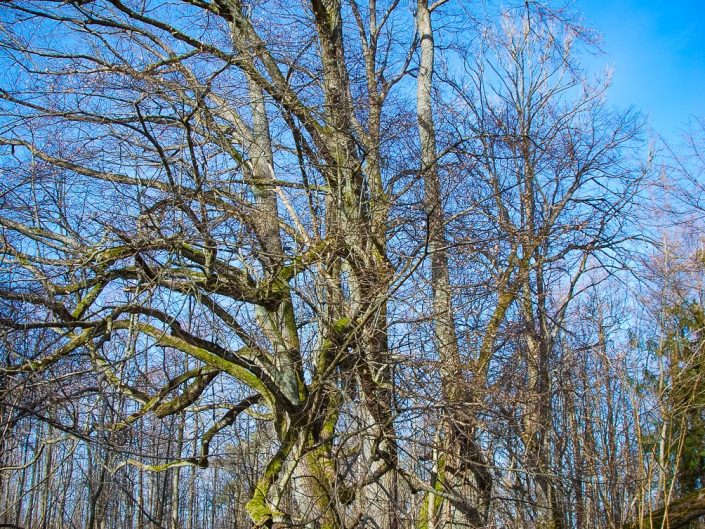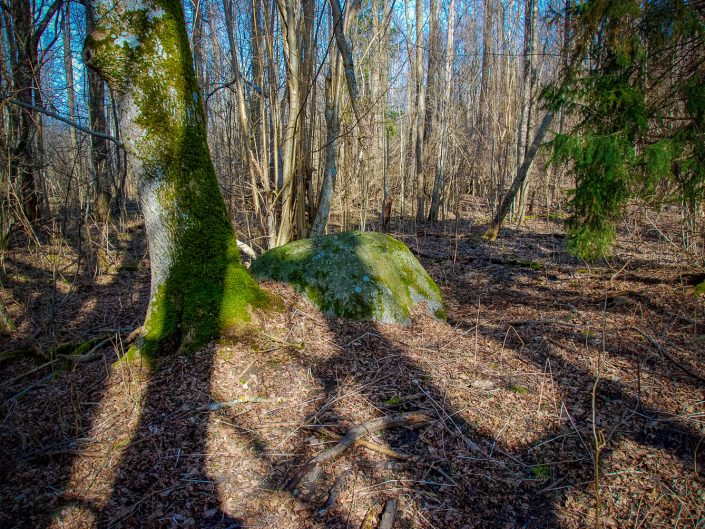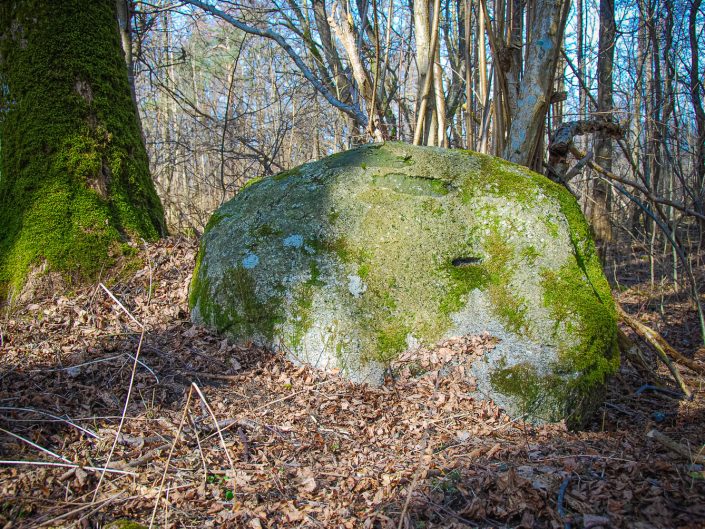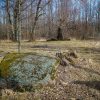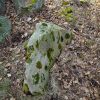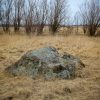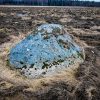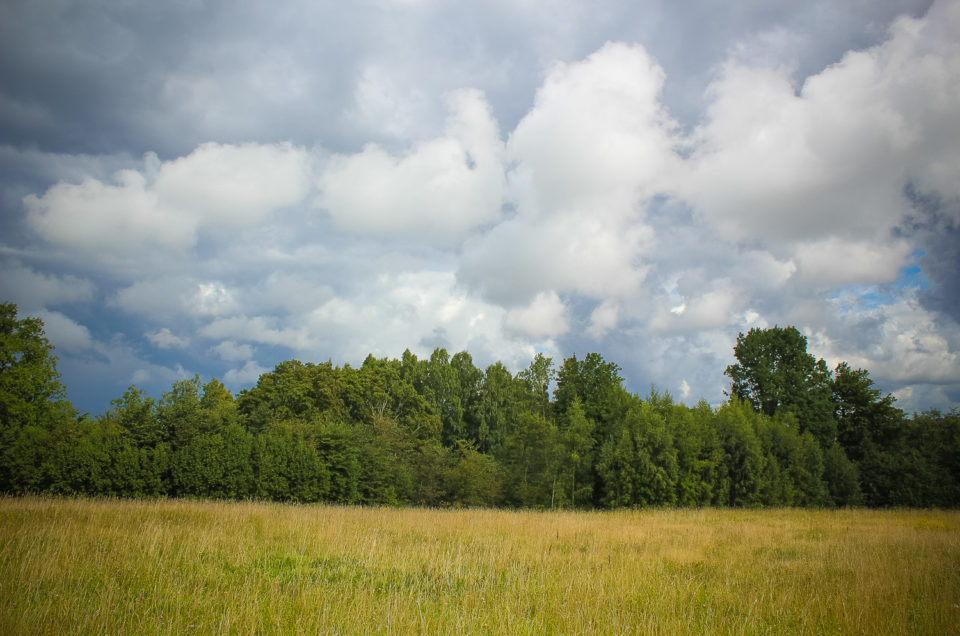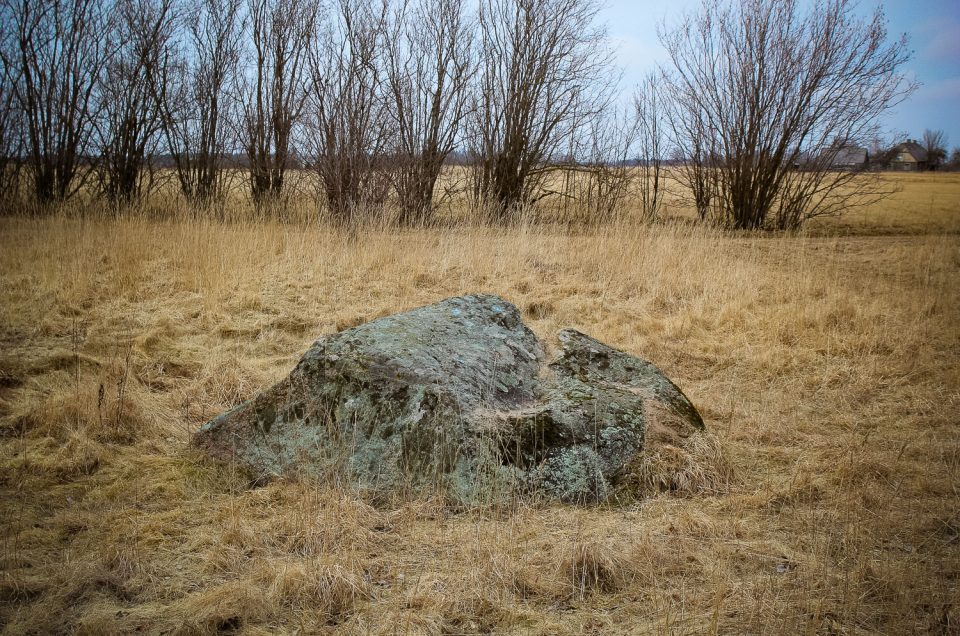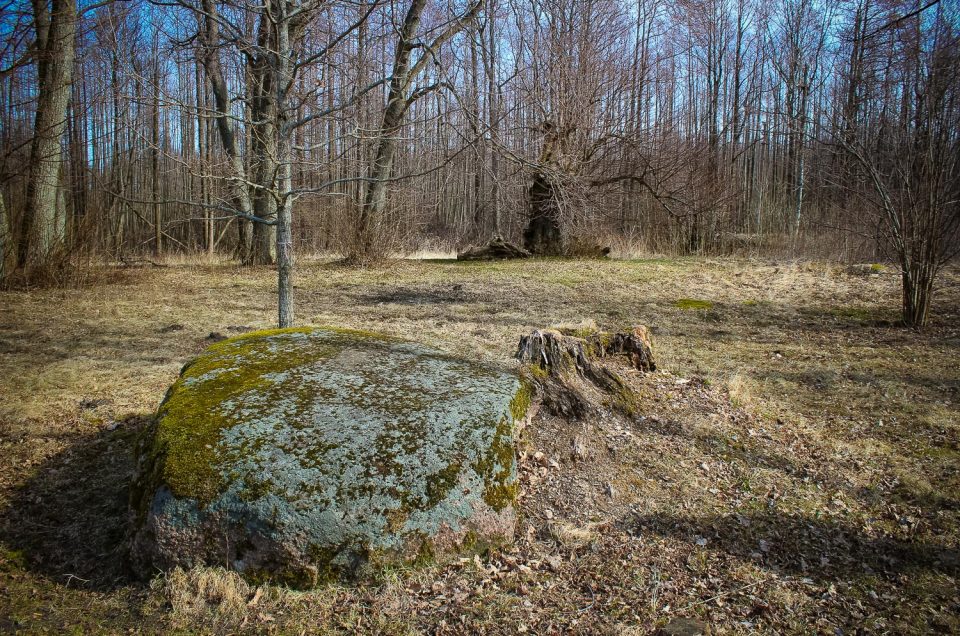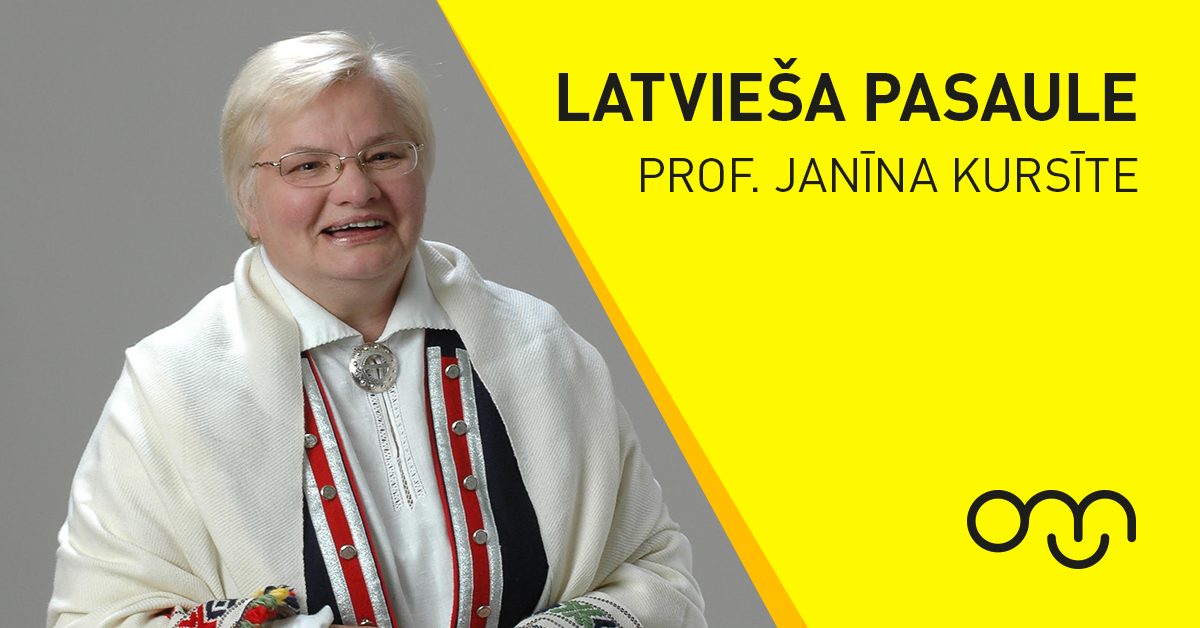s”: 1) 35 x 14 cm, 2) 32 x 9 cm, 3) 12 x 4 cm, 4) 7 x 3.5 cm, in the W side: 1) 13.5 x 6 cm, 2) 10.5 x 6 cm, 3) 18 x 5 cm, NW corner: 1) 15 x 6.5 cm, 2) 3 x 2.5 cm, round, 3) 9 x 4.5 cm. The depth of all foot-prints is 1–3 cm. There are other small foot-print spots on the sides of the stone. The stone seems to be in its original place. A visually more interesting object is the linden with eight forked branches that grows next to the stone.
An archeological monument protected by the state, a cult site. However, there are no clear evidences about both sites as ancient cult places. The stone could be defined as a foot-print stone. Within 8 metres there is a cluster of lindens which now has 6 forked branches — shoots. 2 m W from the linden cluster considered the Šķili Sacred Linden there is a heap of stones or a rectangular layer. This likely construction of stones covering the area of 5 x 3–3.5 m could be a cult site, foundations of a small building or simply a group of dumped stones because the heap seems to be at the end of an old access road. In the middle of the stone group there is a 0.4 m deep pit which might have been excavated by treasure seekers. Altogether the archeological significance of the sites in the vicinity of Šķili homestead is still to be clarified.
The original information about the Šķili (Graviņi) ancient site comes from the reports by archeologist I.Loze in 1976 where it was said: „a cult site – the stone was found in the eastern coast of Pape Lake southwards from the Graviņi homestead. Nearby there are oaks and lindens which the native people call a shrine.” In 1994, however, V.Siksna expressed an assumption in the newspaper “Kursas laiks” that “about the Grēviņi foot-print stone it can only be mentioned that it most likely was the lord of the homestead as it lies in a direct vicinity of the former Šķili homestead.” In 1989 explorer J.Asaris tried to find evidences about the ancient site, however, he failed — “The owner of Graviņi homestead who has been living here for all his life (..) did not know any cult stone southwards from the homestead,” and “no traditions or legends are known about it in the surroundings.”
Extra materials:
Contains information from the project:

Added by
www.latvijas-pilskalni.lv, www.senvietas.lv un hillforts.eu izveidotājs un uzturētājs.
